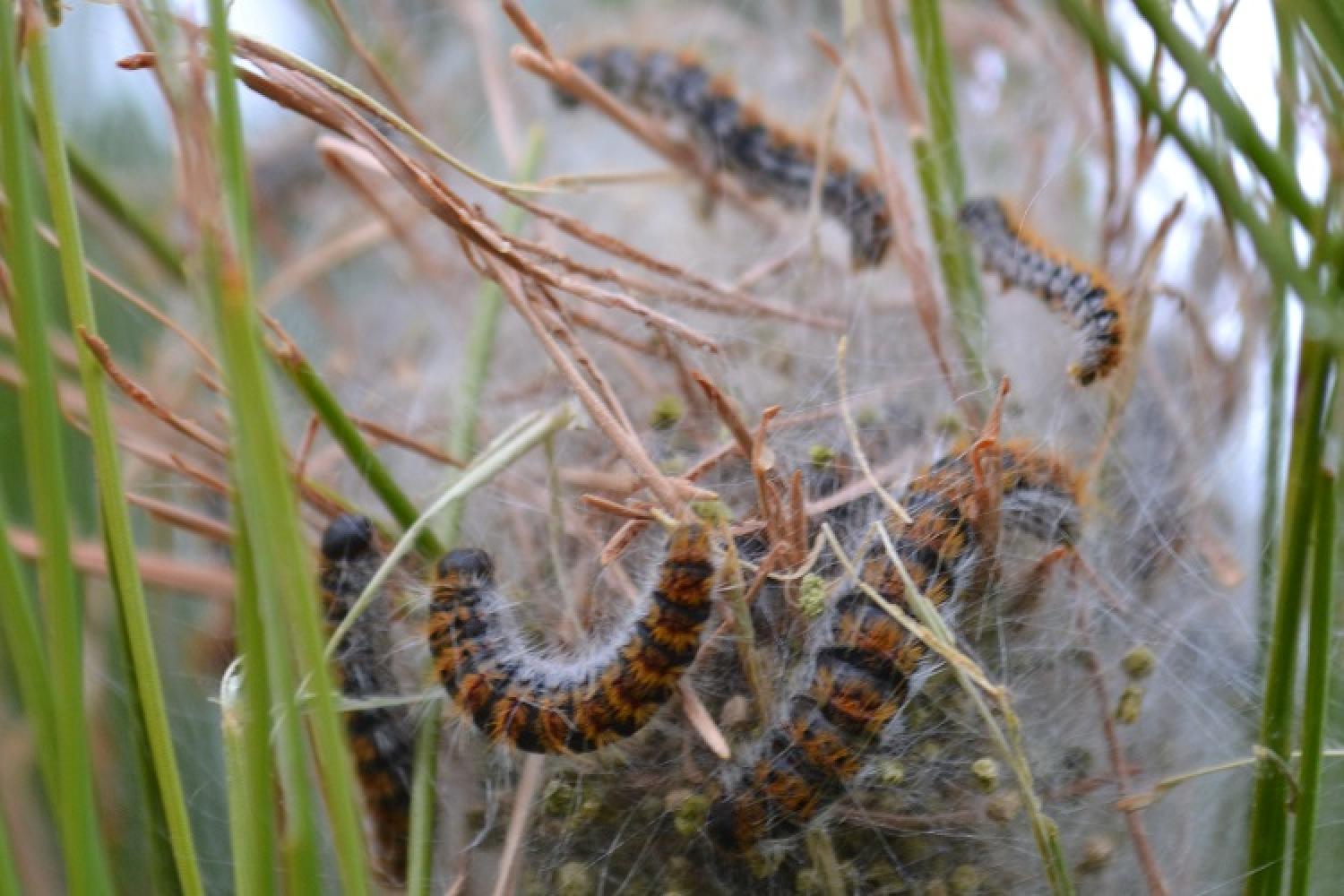Description
Have you every seen strange white nests scattered in pine trees? These are the cocoons of processionary moths. Their small larvae grow during winter and are covered in hairs that sting to protect them against predators. In the spring, they leave their cocoons, forming a marching line and go looking for somewhere where they can go through metamorphosis. The moths only live a night or two, just enough time to lay their eggs on pine needles. A new cycle then begins.
Scientific name
Thaumetopoea pityocampa
Where can you see it?
- Natural habitats: Forests
Did you know?
The larva has hairs that sting and are thrown into the air when they feel threatened. Contact with skin can cause an allergic reaction as well as visual or respiratory problems
Conservation stake
Low





